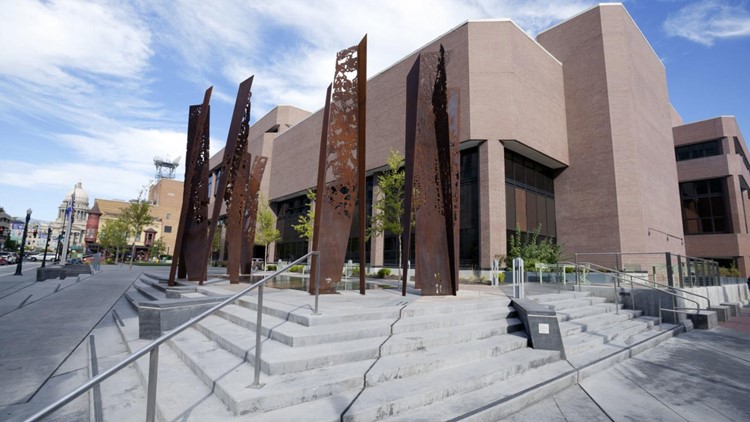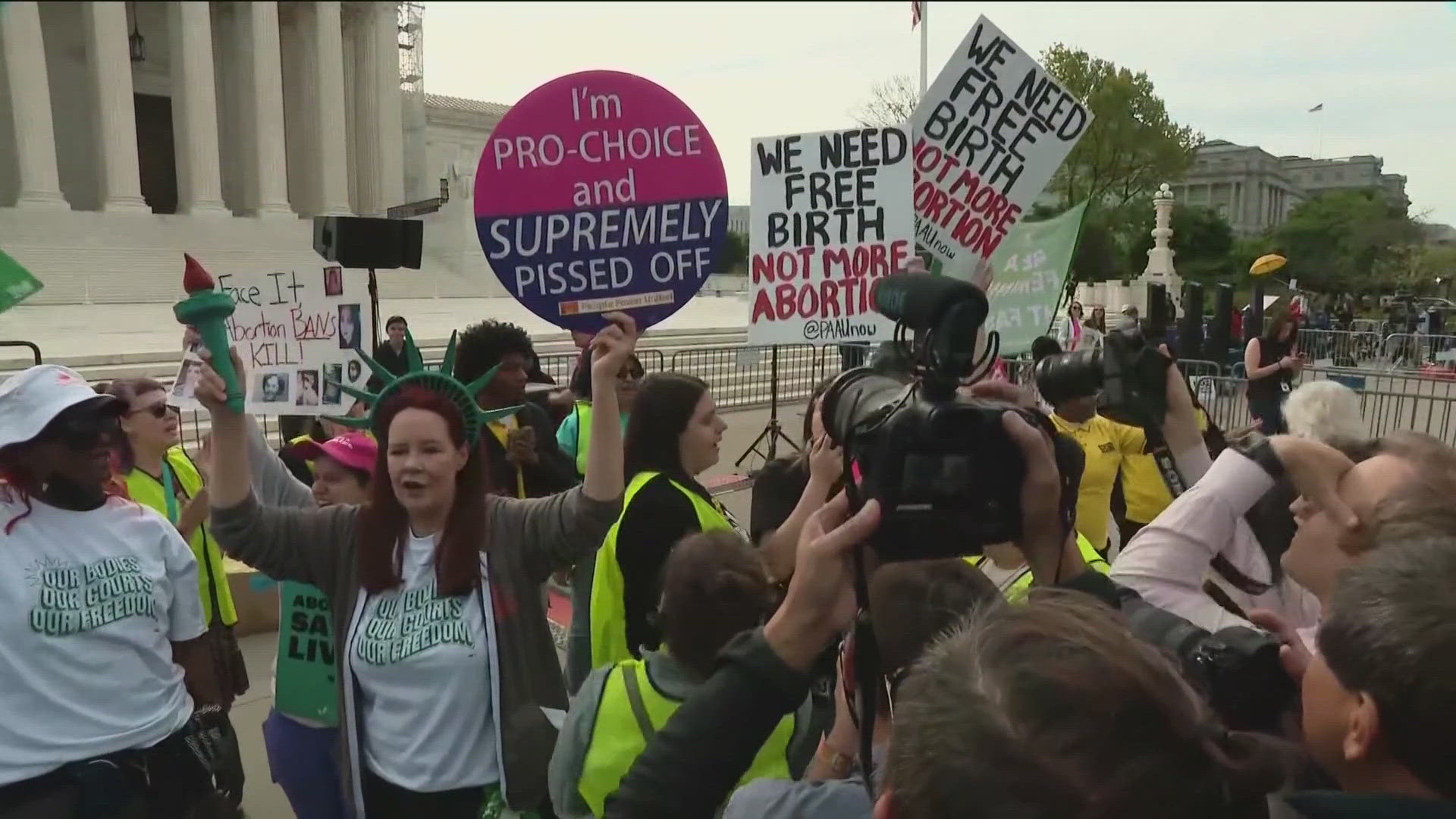BOISE, Idaho — This story was originally published in the Idaho Press.
After an Idaho state representative argued Wednesday that public art is “frivolous” and “unnecessary,” an array of Idaho artists and arts officials strongly disagreed, and the bill ended up being put up for amendments.
“To some people art or the effects of art in the community may be frivolous or unnecessary, but there’s a lot of people who really do value it, and it’s part of the fabric of a community,” Solomon Sahlein, a Boise painter who owns a mural company called Sector 17 and who participated in a major public art project at Rhodes Skate Park under the Connector in downtown Boise.
April VanDeGrift, whose work includes colorful decorated electrical utility boxes and bus shelters in downtown Boise, said, “The art created for our community is not frivolous.” Her art covers surfaces that once were a target for graffiti, she noted. “My art tells a story that helps to build community.”
Rep. Aaron von Ehlinger, R-Lewiston, presented HB 311 on Wednesday, the latest version of his bill to restrict local governments’ ability to place public art, to the House Revenue & Taxation Committee. This version would require a two-thirds vote of the city council or county commissioners to approve public art that costs less than $25,000, and 60% support from voters at a November or May election to approve any public art project costing more than that.
“Hey, I love art, I love artists,” von Ehlinger told the committee. “But when government and hard-earned taxpayer dollars are involved, I think art needs to be at the bottom of our priority list of what we’re spending taxpayer dollars on.”
“Most towns and counties in this state claim to not have a single penny in property tax relief for the people to give, and I would argue that, well, if that’s the case, then maybe these cities and counties need to take a good, hard look at maybe some of the more frivolous areas they are spending the taxpayer’s money on,” the freshman state representative said. “And whether we like art or not, it is not a vital service. Or even a truly necessary one, to get right down to it.”
Von Ehlinger took direct aim at three public art projects around the state that he disliked: The metal sculpture representing a copse of cottonwood trees in front of Boise City Hall; a “Canoe Wave” sculpture in Lewiston; and a Coeur d’Alene sculpture called “Marker 11” that was only on loan to the city as part of a series of sculptures displayed for a year, and used symbolism from Communist regimes, including the hammer and sickle, to make a statement about the coal industry. That sculpture, by a pond in Riverstone Park, was removed in 2019.
Von Ehlinger told the House committee, “It is not arguable that the Soviet Union was one of the most brutal, horrific and genocidal regimes the world has ever known, I would argue worse than the Third Reich ever thought of being.”
He derided the Boise City Hall plaza sculpture as looking like “perhaps a scene out of coastal Virginia, maybe perhaps an abandoned pier with steel sticking out of the water and rusted through from the saltwater in the area. … This is the last thing we need to be wasting money on.”
Von Ehlinger also claimed the Boise sculpture cost $3.8 million. “It’s projects like this, why I’m bringing this,” he said.
But Karl LeClair, public art program manager for the city of Boise, said the entire art project cost only $200,000; $3.8 million was the cost of the plaza renovation. The city strongly opposed the bill.
“The project did go through an extensive public comment period,” LeClair said, in which three different artist teams that were proposed by a selection committee were thrown out, and a community call for proposals was issued directly to local artists and teams. All were presented to the public for a six-month period, and public input favored the cottonwoods sculpture.
“It is representative of a copse of cottonwood trees,” LeClair told lawmakers. “The rusted steel material was an effort to find a material that was sustainable, that could live on for 50, 60, 100 years in that space, should it need to. The pattern that’s cut out from the rusting steel was derived from the pattern of light that filters down through the cottonwood trees along the banks of the Boise River. So it’s evocative of the City of Trees, evocative of the original inhabitants of this place in Idaho, and it brings that sense of the ecology and the geography of this place to the very urban center of Boise.”
Idaho artists and arts officials described similarly open and public processes to select public art around the state.
“It was a really rigorous process,” Sahlein said of the Rhodes Skate Park project, in which “anybody could make their voice heard, their opinions mattered, and that was an integral part of the process.”
In public art, he said, “You can’t do anything that’s overreaching conceptually. … It’s an ebb and flow with the community, and I respect that.”
Byron Folwell, a working artist, architect and contractor from Boise, said, “The existing public art process isn’t broken.”
“Our public art collection, which every citizen owns, includes more than just murals and sculptures,” he said. “It’s a cultural expression of the place in which we live, the people that inhabit this place, their ideals, values and expressions.”
VanDeGrift told the lawmakers, “As a visual artist and creator of public art, I fear that moving forward with this bill will dismantle what has been a thriving program in communities like Boise, Meridian, Nampa, Sun Valley, Coeur d’Alene and more.”
Rep. Doug Okunewicz, R-Hayden, moved to send von Ehlinger’s bill to the full House with a recommendation that it “do pass,” but Rep. Jon Weber, R-Rexburg, made a substitute motion to hold it in committee, which would kill it. “We heard great testimony from those in the art community and the impact that art has on all of our communities,” Weber said. “In this situation, we want to reach down and tell local government how to spend their money. It’s not right. It’s heavy-handed and overreach of government.”
Rep. Clark Kauffman, R-Filer, said, “From the testimony and the conversations I’ve had with my local people, the review and overview I think is plenty good.”
Rep. Ben Adams, R-Nampa, said, “I did a lot of traveling in my childhood, and I got to see art all over Europe from decades and decades. I don’t want there to be a blip from when we were here. That’s not something I think any of us want.”
With the bill poised to die, Rep. Mike Moyle, R-Star, made an amended substitute motion to instead send it to the House’s amending order. “I don’t have a problem with the voters deciding,” Moyle said. But he said he was concerned that the bill could inhibit even private donations to fund public art. “It looks like this bill is probably in a lot of trouble,” Moyle said.
His motion to send the bill to the amending order then narrowly passed, 8-7.



